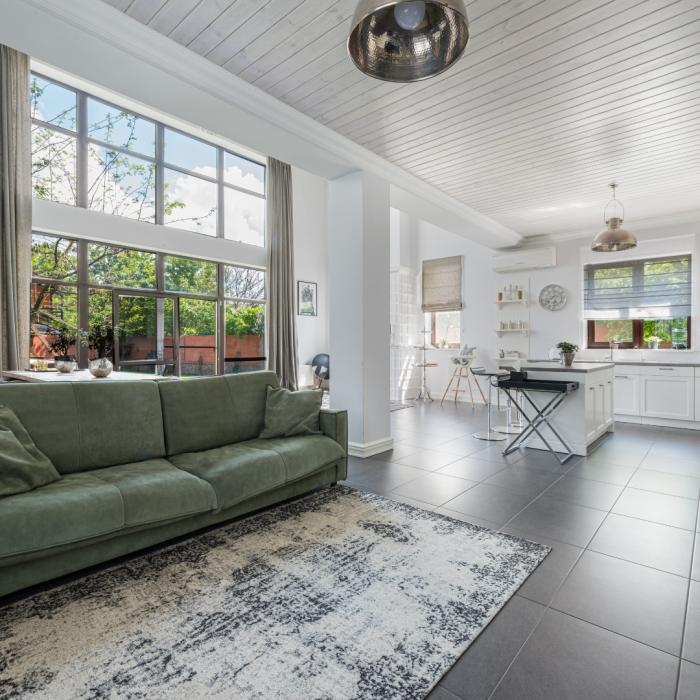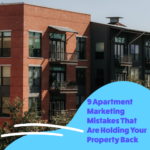
The Art of Crafting the Perfect Apartment Listing
November 15, 2023 7:14 am Leave your thoughtsLearn how to create the best apartment listing possible, and discover ways that you can make your property irresistible. In a digital world of endless competition, it’s more important than ever to know what can separate you from the pack.
The apartment rental market is housed online and requires you to diligently craft an apartment listing that will generate engagement. The good news is that there are many tips and tricks you can use to ensure your property grabs more attention. You also want to establish a refined renter follow-up to close more leases!
The Importance of Effective Apartment Listings
Your apartment listings and your apartment website are how you generate new leases. If your online presence is not optimized, your property does not stand a chance of growing. The importance of effective apartment listings goes beyond just leading interested future residents to apply. It also showcases your community and displays your online brand. Your apartment listings are also related to your reputation and can impact your success for years to come.
How impactful listings can increase occupancy rates:
Impactful apartment listings will increase your occupancy rates. As potential residents scroll online, they’ll notice your community, and have the confidence to move forward. Most apartment listing websites host thousands of options. Not to mention, you are likely paying a large amount of your apartment marketing budget to appear above your competitors.
If you don’t take the time to thoroughly craft the right apartment listing, you will be left with little property growth. When a listing correctly conveys information and presents exciting and enticing images, prospects will flock to your property. There could be a few tweaks on your listing that could make all the difference! Creating the right listing will increase your online visibility.
Introduction to Internet Listing Services (ILS):
An ILS is an internet listing service, and it usually consists of many property listings all housed under the same domain. There are many advantages to listing your property on an ILS, but there can also be negatives if you aren’t aware of how they work. ILS sites have a significant impact on apartment marketing by providing a wide-reaching and easily accessible channel for property promotion. Landlords can showcase their apartments to a broader audience, increasing visibility and attracting more potential tenants.
These platforms often offer tools for landlords to enhance their listings with photos, virtual tours, and detailed descriptions. Conversely, tenants benefit from a consolidated source of information, simplifying the apartment search process. The competitive nature of ILS sites also influences landlords to optimize their listings and pricing strategies to stand out in a crowded market. Overall, ILS sites play a crucial role in shaping the apartment rental market by facilitating efficient connections between landlords and tenants in the digital realm.
Understanding ILS Marketing Features
An ILS website typically includes a selection of marketing features that you can also use to broadcast your property and gain more online visibility. It’s important to understand these digital apartment marketing features as they can often determine where your listing is placed amongst many others. The truth is, your property will simply not appear at the top or gain more views by happenstance. You have to strategically select which marketing features you will use, and how those will help your property show above your competitors.
These key marketing features include sponsored placements, advertisements, map placements, and listings with additional details. Depending on which ILS you’re using, you may have different opportunities available to you. Ensure that you’re taking full advantage of the features that will boost your property!

Crafting a Compelling Property Overview
Now you know, presenting your property effectively on ILS platforms, does not just mean creating your listing. You have to be extremely strategic in creating your listing, and also how you increase your presence. To create the best property overview, start with the list of essentials below. Be sure that you have a clear idea of what separates your community from all of the rest.
1 – Professional Photography: Photos often communicate more than words ever could. Listings with high-quality photos and detailed descriptions can see a conversion rate increase of up to 30%, As your property stands against many others in your local area, photos can absolutely make or break your growth. If your photos do not properly reflect your community or are low-quality, you will immediately lose leads.
The right photos can grab someone’s attention and keep them engaged enough to look directly at your property individually! You will also need to select your strongest image that can be placed as the cover image. Upgrade your photos regularly to create the best aesthetic that will attract more renters.
2 – Professional Copywriting: Do not make the mistake of writing your apartment listing on a whim. Your apartment listing is your one chance to peak someone’s interest, and the way to do that is to use professional copywriting tactics. There are many different approaches from the way you list your location, property details, and current specials. You also want to avoid any grammar or spelling issues, as this will immediately turn people away from your listing.
3 – Highlight Unique Features: The top priority of your listing should be to clearly communicate what sets you apart from the rest of your competitors. With the right copy, images, and headlines, you can create visuals and words that completely set you apart. You also want to showcase the features that you have that make your property unique such as special amenities or location highlights. If you have any smart apartment features, you will want to ensure those are properly displayed as well!
Tailor your listings based on the season. For example, highlighting a cozy interior during winter or a vibrant community pool in summer can attract different demographics.
4 – Pricing Strategy: One of the main challenges that properties face on an ILS is not pricing their property strategically. Keep in mind that the majority of your potential renters will be scanning other properties at this time. You want to set a competitive and realistic price based on market conditions and comparable listings. You will also want to display an eye-catching special or incentive, to truly set you apart from the pack.
Online Leasing Options
Don’t let your leasing growth drop off because someone has to connect with you in person! Build out seamless application flows that allow someone to complete their online leasing as soon as possible. You can also ensure that your listings connect to virtual tours, FAQs, and your apartment website for more specific information.
Recognizing the community needs a website, property managers can leverage this digital platform to effectively communicate with potential renters, showcasing unique features and amenities that set their properties apart.
The idea is that you don’t want to have any burdens in the way, should someone move directly from viewing your ILS to applying online. Plus, now more than ever, people will complete the entire process online. For those who are moving from a different state, it will be essential that there aren’t any roadblocks to moving forward with your property.
Online Rental Marketplaces and Listing Sites
When considering where apartment owners and managers can list their units for rent, it’s important to focus on platforms that will maximize visibility and attract the right audience. Here are some key channels and platforms that are widely used:
Examples include:
- Zillow
- Apartments.com
- MarketApts.com
- Rent.com
- Trulia
- HotPads
- Craigslist
Not every ILS platform is created equal, and depending on your area, you may find more success on some and not others. The best strategy should be customized based on your location, price, and target audience. You simply do not need to be on every listing site possible. Rather, focus on the ILS pages where your property can really shine and invest in your property to appear above the rest.
- Social Media Platforms: Utilizing social media for rental listings can tap into a vast audience. Platforms like Facebook Marketplace, and Instagram can be effective, especially for reaching a local audience.
In the last several years, there has been a rise in social media platforms beginning to transform into functioning apartment listing services. The main platforms are Facebook and Facebook Marketplace, which now act as a search engine for renting options. Facebook also connects renters and properties through online groups, manual posts, and more.
If your property is not optimized for these sources, you may be missing out on leads and residents. Take advantage of the benefits that come from social media traffic. You may find more success and online visibility on a social media platform than you will on a highly overcrowded ILS website.
- Local Classified Websites: Don’t overlook local classified websites or community boards which can be particularly effective for reaching potential renters in specific geographic areas.
At the end of the day, your target audience is typically your local area. The people that are likely scrolling online who may be interested, are already on local classified websites. Perhaps, they may not even know they could find your property there and will stumble upon it looking for something else. Many classified sites also offer key marketing features and advertising options so that you can get more local eyes on your property. Regardless of where you choose to list, keep in mind the best practices so that your listing doesn’t turn anyone away.
- Real Estate Websites: Listing on real estate websites like Realtor.com or Redfin can also be beneficial, especially for higher-end or unique rental properties.
Listing your property on a real estate website offers numerous benefits, significantly expanding its visibility and reach. These platforms, such as Zillow, Realtor.com, or Trulia, have a massive online presence, providing exposure to a wide audience of potential buyers or renters. The detailed property listings on these websites, often accompanied by high-quality photos and comprehensive information, enable you to showcase your property’s features effectively.
Additionally, real estate websites typically leverage search engine optimization (SEO) techniques, making it easier for users to find your listing through online searches. The convenience of virtual tours, online applications, and direct communication tools streamlines the process for both sellers and potential buyers or tenants. A Zillow research indicated that listings where landlords respond within 24 hours see a 50% higher chance of engagement.

Understanding Your Audience
It’s very difficult to market to anyone when you don’t know who you’re speaking to. Every property varies in its target audience, and there are many factors that go into creating your group of interested prospects. Consider the factors that determine your target audience and the characteristics of your potential residents. A greater understanding of your renter audience will give your apartment marketing more success!
- Target Audience Analysis: Who are Your Potential Renters?
Connect with your team to complete a target audience analysis, and use this data as you create the best apartment listing. You can review your neighborhood, average residents, and previous rental data to better understand what people are looking for in your area. This is especially important to look into if you’re marketing student housing, as students will require a different approach as your potential renter.
- Demographic breakdown and preferences.
Break down your group of potential renters by looking at age, employment, family size, lifestyle preferences, education interests, and more. You can also analyze local employers, universities, and neighborhood activities that your renters have in common.
- Tailoring listings to meet specific audience needs.
Use the insights that you gain from your analysis to better reach your audience, and adjust your strategy. Study the data and tailor your listings to speak to your future residents. Use the insights gained from the demographic breakdown to tailor your marketing, leasing, and property management strategies to better meet the needs and preferences of your target renters.
The Basics of Apartment Listings
Don’t overthink your apartment listings so much that you step away from the basics. Words and photos communicate so largely and are the basis of having an engaging listing that will be successful. Oftentimes, if you are not seeing the results that you want from your listing, it’s time to get back to the basics. Adjusting your apartment photos or property descriptions even slightly can make all of the difference. Ensure that your property management company also understands the basics of a successful apartment listing!
Components of an Engaging Apartment Listing
There are three main components that make the best apartment listing. These key elements include images, descriptions, and amenities. Once you learn how to best target each of these areas, your listings will be unstoppable. Before you even consider creating the best listing, you need to be sure you have a portfolio of incredible images, descriptions, and an in-depth review of your best amenities.
- Writing Descriptions that Sell
The words you communicate to your target renter audience are essential. Oftentimes, properties make major copywriting mistakes in the way they explain their community on their apartment website. Your listing needs to include words that sell and descriptions that make your property irresistible. Use the tips below to craft the best property descriptions.
- Know Your Audience:
Understand the target audience for your property, and tailor your description to appeal to their preferences and needs.
- Start with a Strong Headline:
Capture attention with a concise and compelling headline that highlights the most attractive feature or benefit of the property.
- Focus on Unique Selling Points:
Identify and emphasize the unique features or selling points of the property. Whether it’s a stunning view, modern amenities, or a spacious layout, highlight what sets the property apart.
- Create a Vivid Picture:
Use descriptive language to paint a vivid picture of the property. Help potential buyers or renters visualize themselves living in the space by detailing the atmosphere, layout, and lifestyle it offers.
- Highlight Key Features:
Clearly outline the essential features of the property, such as the number of bedrooms and bathrooms, square footage, and notable amenities. Ensure that you have high-quality apartment photos that properly show your best community features.
- Use Descriptive Adjectives:
Employ positive and evocative adjectives to describe the property. Words like “spacious,” “luxurious,” and “inviting” can create a positive impression.
- Tell a Story:
Craft a narrative that engages the reader. Describe how the property flows from one room to another and how it suits the needs and desires of potential buyers or renters.
- Address Lifestyle Benefits:
Explain how the property enhances the lifestyle of the buyer or renter. Discuss nearby attractions, schools, parks, or any other amenities that contribute to the overall living experience.
- Be Honest and Accurate:
Provide accurate and transparent information. Misleading descriptions can lead to disappointment and may deter potential buyers or renters.
- Consider the Neighborhood:
Briefly mention the neighborhood and its positive aspects. Highlight nearby conveniences, public transportation, and community features that add value to the property.
- Keep it Concise:
While providing detailed information is important, keep the description concise. Most readers prefer clear and to-the-point descriptions.

Leveraging A/B Testing
A/B testing, also known as split testing, is a method of comparing two versions (A and B) of a webpage, paid advertisement, or other content to determine which one performs better. In the context of apartment listings, A/B testing is highly relevant for optimizing the effectiveness of property marketing.
By creating two variations (A and B) and exposing them to similar audiences, practitioners can analyze performance metrics to identify which version generates more engagement, inquiries, or conversions. This iterative process allows property managers and landlords to refine their listings based on data-driven insights, ultimately improving the effectiveness of their marketing strategies and enhancing the chances of attracting potential tenants in a competitive real estate market.
Use analytics tools to understand which aspects of your listings are performing well. This can include tracking click-through rates, engagement times, and conversion rates.
Designing Your A/B Tests
Designing effective A/B tests for apartment marketing involves a strategic approach to optimize key elements of your property listings. Here are three steps to guide the process:
1 – Identify Variables to Test:
Begin by determining which elements of your apartment listing you want to test. Common variables include headlines, property descriptions, images, pricing structures, and calls to action. Select elements that are likely to have a significant impact on user engagement and conversion.
2 – Create Clear Variations (A and B):
Develop distinct variations for the chosen elements in your apartment listing. For instance, if testing headlines, create two different headlines that convey the property’s value in unique ways. Ensure that the variations are clearly defined and mutually exclusive, allowing for a straightforward comparison. Keep other factors constant to isolate the impact of the variable being tested.
3 – Establish Metrics and Analyze Results:
Define key performance metrics that align with your marketing goals. These could include click-through rates, conversion rates, inquiry rates, or other relevant engagement metrics. Implement the A/B test by randomly assigning users to either Version A or Version B and collecting data on their interactions.
After a sufficient sample size is reached, analyze the results to determine which variation performed better based on the established metrics. Use the insights gained to inform future marketing strategies and continuously refine your apartment listings.
Interpreting A/B Testing Results
Interpreting A/B testing results involves analyzing performance metrics to understand the impact of changes made in the variations. Begin by examining key metrics, such as click-through rates, conversion rates, or engagement levels, for Versions A and B. Identify which variation outperforms the other based on your predefined goals. If the results are statistically significant and one version consistently shows superior performance, it suggests that the changes made to that element had a positive impact.
However, if there is no clear winner or the differences are not statistically significant, consider refining your test by adjusting the elements or conducting further iterations. A/B testing is an iterative process, and interpreting results involves a balance of statistical rigor and practical insights to optimize apartment marketing strategies effectively.
Don’t Miss Visual Elements
Your online listing is a visual experience! The visual elements on your apartment listing need to stand out and act as a way to engage prospects as they’re scrolling through hundreds of listings. Don’t neglect the visual aspect of things, as this will be what initially draws someone to your property.
- Photography Tips for Eye-Catching Listings
Whenever possible, schedule your photo shoot during daylight hours to take advantage of natural light. Natural light creates a warm and inviting atmosphere, making spaces appear more open and appealing. Open curtains and blinds to let sunlight in, and avoid using harsh artificial lighting that may create unflattering shadows.
Pay attention to the composition of your photos and consider staging the apartment to highlight its best features. Arrange furniture thoughtfully, add tasteful decor elements, and ensure rooms are tidy and clutter-free. Capture Key Selling Points:
Identify and emphasize the key selling points of the apartment. Whether it’s a breathtaking view, modern appliances, or stylish interior design, make sure these features are prominently displayed in your photographs. Close-up shots of notable details, such as granite countertops or a spacious walk-in closet, can provide a more immersive experience for potential tenants. Highlight the lifestyle aspects of the property, such as a cozy reading nook or a well-designed outdoor space.
2. Virtual Tours: A Game Changer
Your online listing is meant to be the hub where any prospect could move through your entire leasing process. Oftentimes, photos are not enough to truly showcase what life in your community is like. Listings with virtual tours receive 87% more views than those without, according to Realtor.com data. Include your virtual tours on your apartment listing or make them easily accessible for anyone who wants a deeper look.
Advanced Listing Strategies
- SEO Optimization for Apartment Listings
Apartment listing websites function very similarly to major search engines, in the sense that with certain strategies, you can appear higher up in the results. By implementing specific keywords or content, you can rank higher when someone searches your area or zip code. Each listing site can vary, so study how each algorithm works and what you can do to further appear at the top.
Data shows that the first two weeks of a listing are crucial. Listings that receive significant engagement within this period tend to perform better overall. Therefore, optimizing the listing for immediate impact is essential.
With the rise of smart home devices, optimizing apartment listings for voice search can be a game-changer. This involves using natural language and question-based phrases in the listing.
Even with a solid apartment listing, you still need your current residents to back you up. In your apartment listing, consider using social reviews or posts from your current residents. This content will give your property listing a personal touch, and incorporate genuine feedback.
Digital Marketing Integration
Integrating Listings with Digital Marketing Efforts
Many apartment marketers will keep their listings disconnected from their broader leasing strategies. Property marketing often includes incorporating different strategies with each other, to maximize the results. Many marketing efforts are deeply connected, and you will have to use them in combination with each other to see the most growth.
You can use your listing on social media, and you can use your social media on your listing. You can advertise your listing and also advertise people to your listing. There are so many ways that apartment marketing stays connected and helps you to see unprecedented growth.
Effective Use of Social Media in Promoting Listings
Social media is going to continually bring new eyes to your property! Use your social platforms to bring more traffic to your listing. With many new social features, you can link directly to your listing and streamline future residents to more information.
Location and Community
Highlighting Location and Community Features
The right apartment community gives a resident the ability to further enjoy their lifestyle and local area. Provide each of your future residents with a glimpse into what their life can look like in their neighborhood. Highlight local attractions and ways that their quality of life would increase!
Creating a Sense of Community in Listings
Renters need to understand clearly the benefits they will receive when continuing to rent. Since many people tell them they should be home-buyers instead, it’s important to continue to showcase the reasons why your community helps elevate their routine. In your listing include community elements that bring each resident more success in their daily agenda. You can also help them to see your property as a whole community, rather than just a disconnected apartment.
Legal and Ethical Considerations
Navigating fair housing laws in listings is a critical aspect of real estate marketing to ensure compliance with anti-discrimination regulations. Fair housing laws prohibit discrimination based on factors such as race, color, religion, sex, national origin, disability, and familial status. When creating property listings, it’s essential to avoid any language, images, or content that could be perceived as discriminatory or exclusive. Instead, focus on providing objective and inclusive information about the property’s features, amenities, and location.
Avoid making references to specific demographics or using language that may discourage certain groups from applying. Be mindful of the imagery chosen, ensuring it represents a diverse range of individuals. Real estate professionals should stay informed about fair housing regulations and regularly review and update their listing practices to adhere to these laws, promoting equal access to housing opportunities for all.
Need apartment marketing help?
Categorised in: Apartment Marketing
This post was written by Isabella Housel
Isabella Housel is a passionate and versatile professional writer with a deep love for words and a commitment to crafting compelling content that engages, informs, and inspires. With many years of experience in the industry, she has honed her skills across various genres, from creative storytelling to informative articles and technical documentation.





